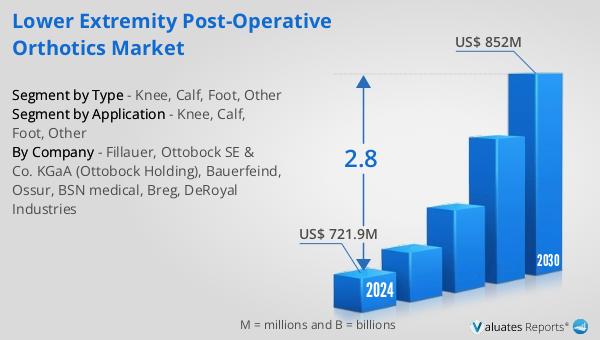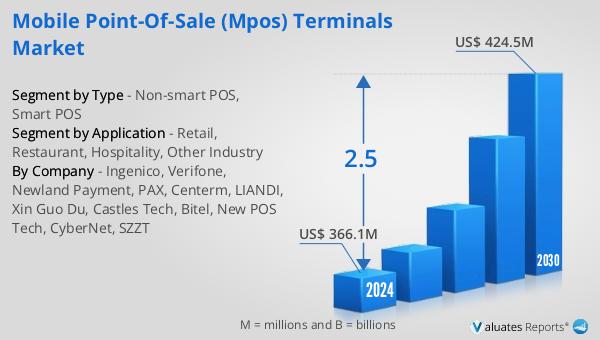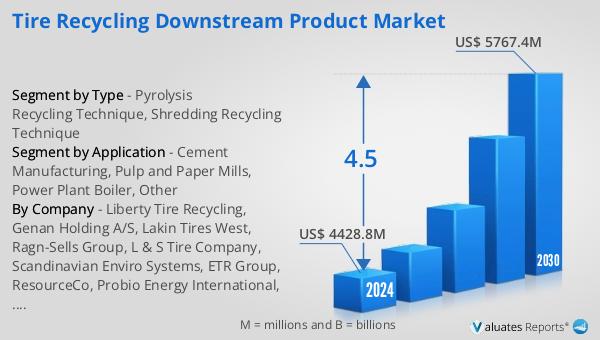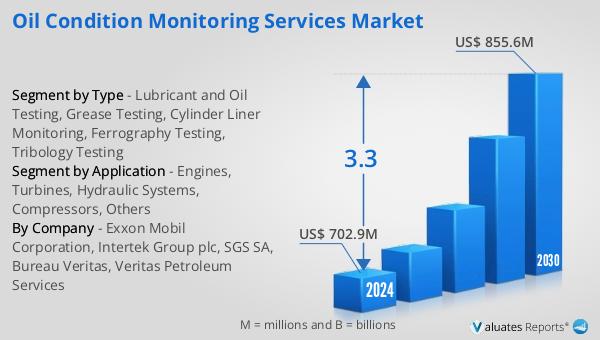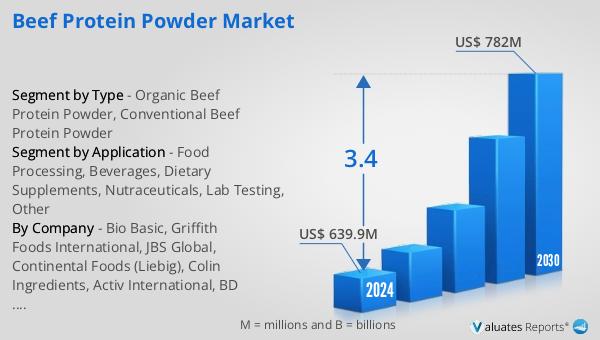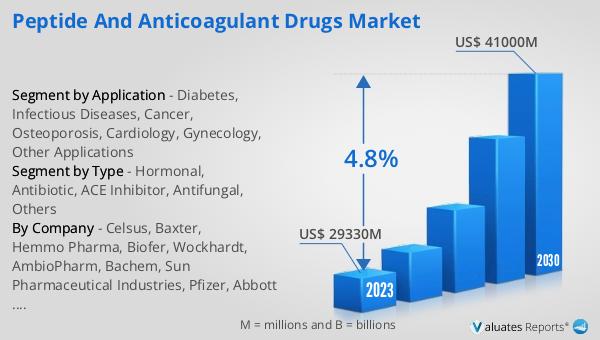What is Global Bulk Ferroalloys Market?
The Global Bulk Ferroalloys Market is a significant segment within the broader metallurgical industry, primarily focused on the production and distribution of ferroalloys. These are alloys of iron with a high proportion of one or more other elements such as manganese, aluminum, or silicon. Ferroalloys are crucial in the manufacturing of steel and iron, as they impart distinctive qualities to the metals, such as improved strength, durability, and resistance to corrosion. The market for bulk ferroalloys is driven by the demand from the steel industry, which is the largest consumer of these materials. As economies grow and infrastructure projects expand, the need for steel and, consequently, ferroalloys increases. This market is characterized by its global reach, with production and consumption spread across various regions, including Asia-Pacific, North America, and Europe. The market dynamics are influenced by factors such as raw material availability, technological advancements in production processes, and environmental regulations. Companies operating in this market are continually seeking ways to optimize production efficiency and reduce costs while meeting the stringent quality standards required by their customers. The global bulk ferroalloys market is poised for growth as industries continue to innovate and expand their capabilities.
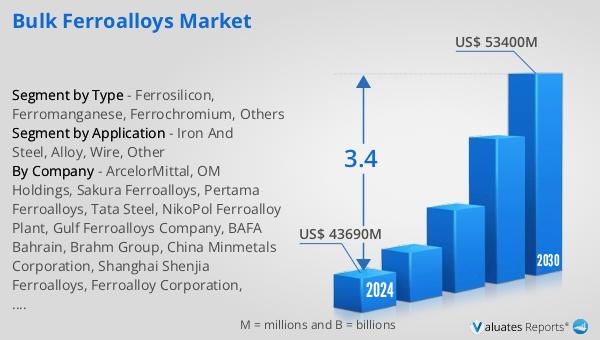
Ferrosilicon, Ferromanganese, Ferrochromium, Others in the Global Bulk Ferroalloys Market:
Ferrosilicon, ferromanganese, and ferrochromium are among the most prominent types of ferroalloys within the Global Bulk Ferroalloys Market, each serving distinct roles in the metallurgical industry. Ferrosilicon is an alloy of iron and silicon, typically containing 15% to 90% silicon. It is primarily used as a deoxidizing agent in steelmaking, helping to remove oxygen from molten steel and improve its quality. Additionally, ferrosilicon is used in the production of silicon steel for electromotors and transformer cores due to its magnetic properties. The demand for ferrosilicon is closely tied to the steel industry, which is its largest consumer. Ferromanganese, on the other hand, is an alloy of iron and manganese, containing approximately 65% to 80% manganese. It is essential in steel production as it acts as a deoxidizer and desulfurizer, improving the mechanical properties of steel. Manganese is a critical component in the production of high-strength steel, which is used in construction, automotive, and heavy machinery industries. The demand for ferromanganese is driven by the need for high-quality steel products that can withstand extreme conditions. Ferrochromium, another vital ferroalloy, is an alloy of chromium and iron, containing 50% to 70% chromium. It is primarily used in the production of stainless steel, which requires chromium to enhance its corrosion resistance and hardness. The stainless steel industry is the largest consumer of ferrochromium, and its demand is influenced by the growth of industries such as construction, automotive, and consumer goods. The production of ferrochromium is energy-intensive, and its market dynamics are affected by factors such as electricity costs and environmental regulations. Other ferroalloys, such as ferrotitanium, ferromolybdenum, and ferronickel, also play significant roles in the metallurgical industry. Ferrotitanium is used to refine grain size and improve the strength of steel, while ferromolybdenum enhances the corrosion resistance and weldability of steel. Ferronickel is primarily used in the production of stainless steel and other nickel-based alloys. The demand for these ferroalloys is driven by the need for specialized steel products with unique properties. The global bulk ferroalloys market is characterized by its diversity, with each type of ferroalloy serving specific functions and catering to different industries. The market is competitive, with numerous players striving to meet the evolving needs of their customers while adhering to environmental and quality standards. As industries continue to innovate and develop new applications for ferroalloys, the market is expected to grow, driven by the increasing demand for high-performance materials.
Iron And Steel, Alloy, Wire, Other in the Global Bulk Ferroalloys Market:
The Global Bulk Ferroalloys Market plays a crucial role in various industries, particularly in the production of iron and steel, alloys, wires, and other applications. In the iron and steel industry, ferroalloys are indispensable as they are used to introduce specific elements into the steel, enhancing its properties and performance. For instance, ferrosilicon is used as a deoxidizer in steelmaking, helping to remove oxygen and improve the quality of the steel. Ferromanganese is another essential ferroalloy used in steel production, as it acts as a deoxidizer and desulfurizer, improving the mechanical properties of the steel. The demand for ferroalloys in the iron and steel industry is driven by the need for high-quality steel products that can withstand extreme conditions and meet stringent quality standards. In the alloy industry, ferroalloys are used to produce a wide range of specialized alloys with unique properties. For example, ferrochromium is used in the production of stainless steel, which requires chromium to enhance its corrosion resistance and hardness. Stainless steel is widely used in industries such as construction, automotive, and consumer goods, where durability and resistance to corrosion are critical. Other ferroalloys, such as ferrotitanium and ferromolybdenum, are used to produce alloys with specific properties, such as improved strength, corrosion resistance, and weldability. The demand for ferroalloys in the alloy industry is driven by the need for high-performance materials that can meet the evolving needs of various industries. In the wire industry, ferroalloys are used to produce high-quality wires with specific properties. For example, ferrosilicon is used in the production of silicon steel, which is used to manufacture electromotors and transformer cores due to its magnetic properties. The demand for ferroalloys in the wire industry is driven by the need for high-quality wires that can meet the stringent requirements of various applications, such as electrical and electronic devices. Other applications of ferroalloys include the production of cast iron, welding electrodes, and foundry products. In the production of cast iron, ferroalloys are used to introduce specific elements into the iron, enhancing its properties and performance. For example, ferrosilicon is used to improve the strength and hardness of cast iron, while ferromanganese is used to improve its ductility and toughness. In the production of welding electrodes, ferroalloys are used to introduce specific elements into the electrode, enhancing its performance and quality. The demand for ferroalloys in these applications is driven by the need for high-quality products that can meet the stringent requirements of various industries. The Global Bulk Ferroalloys Market is characterized by its diversity, with each type of ferroalloy serving specific functions and catering to different industries. The market is competitive, with numerous players striving to meet the evolving needs of their customers while adhering to environmental and quality standards. As industries continue to innovate and develop new applications for ferroalloys, the market is expected to grow, driven by the increasing demand for high-performance materials.
Global Bulk Ferroalloys Market Outlook:
The outlook for the Global Bulk Ferroalloys Market indicates a steady growth trajectory over the coming years. The market is anticipated to expand from a valuation of approximately US$ 43,690 million in 2024 to around US$ 53,400 million by 2030. This growth is expected to occur at a Compound Annual Growth Rate (CAGR) of 3.4% during the forecast period. This projected growth can be attributed to several factors, including the increasing demand for steel and iron products across various industries such as construction, automotive, and infrastructure development. As these industries continue to expand, the need for high-quality steel and iron products, which rely heavily on ferroalloys, is expected to rise. Additionally, technological advancements in the production processes of ferroalloys are likely to enhance efficiency and reduce costs, further driving market growth. Environmental regulations and sustainability concerns are also expected to play a role in shaping the market dynamics, as companies strive to meet stringent standards while maintaining competitiveness. The global nature of the market, with production and consumption spread across different regions, adds to its complexity and potential for growth. As industries continue to innovate and develop new applications for ferroalloys, the market is poised to benefit from the increasing demand for high-performance materials. The competitive landscape of the market is characterized by numerous players striving to meet the evolving needs of their customers while adhering to environmental and quality standards. Overall, the Global Bulk Ferroalloys Market is expected to experience steady growth, driven by the increasing demand for high-quality steel and iron products and the ongoing innovation in the industry.
| Report Metric |
Details |
| Report Name |
Bulk Ferroalloys Market |
| Accounted market size in 2024 |
US$ 43690 in million |
| Forecasted market size in 2030 |
US$ 53400 million |
| CAGR |
3.4 |
| Base Year |
2024 |
| Forecasted years |
2025 - 2030 |
| Segment by Type |
- Ferrosilicon
- Ferromanganese
- Ferrochromium
- Others
|
| Segment by Application |
- Iron And Steel
- Alloy
- Wire
- Other
|
| Production by Region |
- North America
- Europe
- China
- Japan
|
| Sales by Region |
- North America (United States, Canada)
- Europe (Germany, France, UK, Italy, Russia) Rest of Europe
- Nordic Countries
- Asia-Pacific (China, Japan, South Korea)
- Southeast Asia (India, Australia)
- Rest of Asia
- Latin America (Mexico, Brazil)
- Rest of Latin America
- Middle East & Africa (Turkey, Saudi Arabia, UAE, Rest of MEA)
|
| By Company |
ArcelorMittal, OM Holdings, Sakura Ferroalloys, Pertama Ferroalloys, Tata Steel, NikoPol Ferroalloy Plant, Gulf Ferroalloys Company, BAFA Bahrain, Brahm Group, China Minmetals Corporation, Shanghai Shenjia Ferroalloys, Ferroalloy Corporation, MORTEX Group, Georgian American Alloys, SAIL, OFZ S.A., Vale S.A. |
| Forecast units |
USD million in value |
| Report coverage |
Revenue and volume forecast, company share, competitive landscape, growth factors and trends |
